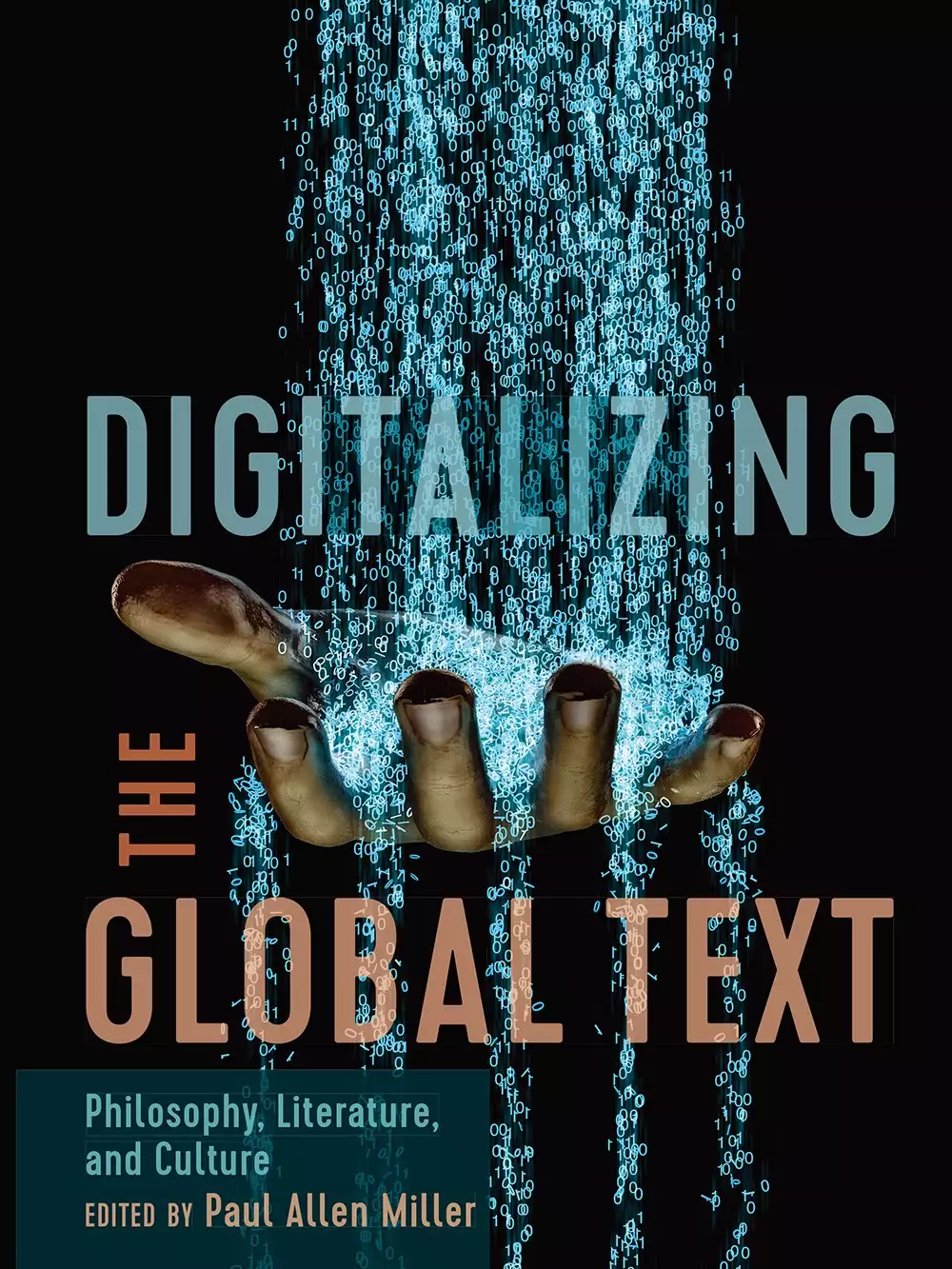Arrive at Taipei的問題,透過圖書和論文來找解法和答案更準確安心。 我們找到下列線上看、影評和彩蛋懶人包
Arrive at Taipei的問題,我們搜遍了碩博士論文和台灣出版的書籍,推薦林思駿寫的 隱蔽的空間:寶藏巖地方故事集 和PaulAllenMiller,AlexanderBeecroft,BennettYu-HsiangFu,NicolasVazs的 Digitalizing the Global Text:Philosophy, Literature, and Culture都 可以從中找到所需的評價。
這兩本書分別來自田園城市 和國立臺灣大學出版中心所出版 。
東吳大學 企業管理學系 蘇雄義所指導 黃麒安的 電動巴士廠循環供應鏈設計之探討 - 以大台北地區公車業者為例 (2021),提出Arrive at Taipei關鍵因素是什麼,來自於乾淨運輸、循環經濟、循環供應鏈、荷電狀態、聯合服務公司、電動巴士。
而第二篇論文中國文化大學 景觀學系 蔡德一所指導 林柚希的 高齡友善鄰里戶外空間建構之探討 (2021),提出因為有 在地老化、高齡友善環境、戶外環境舒適度、鄰里可及性的重點而找出了 Arrive at Taipei的解答。
隱蔽的空間:寶藏巖地方故事集

為了解決Arrive at Taipei 的問題,作者林思駿 這樣論述:
收錄113篇故事揭露你從不知道的寶藏巖 ......公館周邊的大學生在吃膩了學校附近餐廳的口味之後,偶爾會來寶村買便當;幾十年前的自來水園區雖然被政府列為軍事重地,但無論是寶藏巖還是公館商圈的孩童們都很愛闖入探險;而同樣和寶藏巖聚落均為法定文化資產的紀州庵,他們的管理者在面對老房子和地方社區的民眾時,又抱持著什麼樣的態度與看法?對於某些在地人來說,寶藏巖可以是老人家周末和牌友打牌的所在,也可以是運動散心的好去處;對於關注文資保存、居住正義和生態環境的地方知識分子而言,寶藏巖更是指標性的存在,它提供了一個讓眾人觀摩學習、反省甚至是批判的場域。 一場以「空間」為題
的地方書寫實驗 集結了各式各樣描述寶藏巖的故事與其說是一段漫長村落生活史的修補還原,不如說這樣的文本累積表現出來的其實是一種「情境式」的空間敘述,讀者可以藉由觀看不同人物對於寶藏巖的感受,加上自己的理解與想像,無論他對於寶藏巖是否熟悉,都可以在閱讀《隱蔽的空間》這本書之後,重新建構一套屬於自己的寶藏巖的模樣。 【備註一】本書故事根據真實的口述訪談重新編寫而成,考量受訪者的生活隱私,部分文章當中提到的人物以化名的方式呈現。 【備註二】全書內容中英對照,讓更多外國朋友得以透過故事認識寶藏巖。 各界推薦(按姓氏筆畫排列) 宋世祥_【百工裡的人
類學家】創辦人 吳光庭_ 國立成功大學建築系教授 吳秉聲_ 國立成功大學建築學系副教授兼博物館館長 李清志_ 都市偵探、實踐大學建築系副教授 李曉雯_ 台北國際藝術村總監 洪伯邑_ 台大地理環境資源學系副教授 凌宗魁_ 建築文資工作者 陳懷萱_【百工裡的人類學家】共同創辦人 康旻杰_ 台大建築與城鄉研究所副教授 詹智雄_ 寶藏巖文化村協會總幹事 榮芳杰_ 清華大學環境與文化資源學系副教授
Arrive at Taipei進入發燒排行的影片
Boarding date: Friday, January 24, 2020
Airline: Japan Airlines
Flight number: JL804
Departure point: Taipei (Taoyuan) -TPE
Arrival: Tokyo (Narita) -NRT
Departure time: 13:20
Arrival time: 17:25
Duration: 2 hours 55 minutes
Equipment: B737-800
Aircraft number: JA315J
Registration date: October 2008
Seating: Economy Class (49A)
Ticketing: Japan Airlines Award Tickets
A previously connected flight arriving from Macau on the first Starlux Airlines flight. Can I enter the restricted area in such a situation about 20 hours after departure? I've actually checked.
I started Mercari.
I exhibit mainly on airplane related products.
https://www.mercari.com/jp/u/261412905/
We apologize for the higher price. I would be grateful if you could cooperate without funding.
Sales will be used to fund travel.
Unregistered Mercari!
If you register with the introduction code "XYKSRR", you will get 500 yen points!
https://www.mercari.com/jp/dl/
Yamamoto also gets points. It is an indirect form, but please support and support by Mercari registration.
Please also subscribe to the sub-channel dedicated to airplane reviews.
Voleas Yamamoto Classic
https://www.youtube.com/channel/UCA_q...
Real-time information
Twitter
https://twitter.com/voreas_yamamoto
Instagram
http://www.instagram.com/voreas_yamamoto
#First time to arrive at the airport and wait for a flight
電動巴士廠循環供應鏈設計之探討 - 以大台北地區公車業者為例
為了解決Arrive at Taipei 的問題,作者黃麒安 這樣論述:
隨著全球氣候變遷加劇,降低碳排放量已成為國際主要關注之課題,電動化運輸成為各國積極推動乾淨運輸(Clean Transport)之主要目標。促進電動車輛市場及充電基礎設施建置,能有效連結具組織的商用車隊與電動巴士製造廠。本研究旨在探討電動巴士製造廠營運與發展現況並設計出具循環經濟特色之電動巴士循環供應鏈。透過蒐集「電動巴士供應模式現況與發展專家論壇」與個案公司深入訪談逐字稿,爾後透過質化編碼,得出國內電巴廠供應市場現況。經二次歸納後,本研究可分類為23項大型課題及10個子項課題。針對前述33項課題,本研究採設計科學方法,對電巴廠及業者最關注之4大類型課題及衍伸的9個子項課題進行問題描述、分析
與解決方案架構。經過課題描述、分析、架構解決方案後,本研究得出以下結果:(1)電動巴士易受多種因素影響(天氣、輔助系統、路線、電池、馬達等),因此電巴設計應參酌本研究第六章之建議;(2)近年來電動巴士電池頻頻發生問題,因此業者需針對電池荷電狀態(SOC)與安全性進行評估檢測;(3)透過第三方聯合服務公司或電動巴士車廠集團能提供解決公車業者購買電動巴士之融資方案;(4)經地方政府整合聯合服務公司統整在地電巴產業後,可擬定推展計畫,並供應給中央政府建立電動巴士相關法案;(5)透過對整體產業循環供應鏈思維建置,協助電動巴士車輛、電池、商業模式、政策等構想出具循環思維的生產與消費模式。
Digitalizing the Global Text:Philosophy, Literature, and Culture

為了解決Arrive at Taipei 的問題,作者PaulAllenMiller,AlexanderBeecroft,BennettYu-HsiangFu,NicolasVazs 這樣論述:
A few years ago globalism seemed to be both a known and inexorable phenomenon. With the end of the Cold War, the opening of the Chinese economy, and the ascendancy of digital technology, the prospect of a unified flow of goods and services and of people and ideas seemed unstoppable. Yes,
there were pockets of resistance and reaction, but these, we were told, would be swept away in a relentless tide of free markets and global integration that would bring Hollywood, digital fi nance, and fast food to all. Nonetheless, we have begun to experience the backlash against a global world
founded on digital fungibility, and the perils of appeals to nationalism, identity, and authenticity have become only too apparent. The anxieties and resentments produced by this new world order among those left behind are oft en manifested in assertions of xenophobia and particularity. The “other”
is coming to take what is ours, and we must defend ourselves! Digitalizing the Global Text is a collection of essays by an international group of scholars that situate themselves squarely at this nexus of forces. Together they examine how literature, culture, and philosophy in the global and dig
ital age both enable the creation of these simultaneously utopian and dystopian worlds and offer resistance to them. 好評推薦 “Digitalizing the Global Text is a vibrant volume that explores the paradoxes of the local, the global, and the universal, with particular emphasis on the digital humanities.
This wonderful collection of essays from an accomplished global group of contributors will be of wide interest to humanities scholars.”--- Jeffrey R. Di Leo, University of Houston–Victoria “Traversing historical periods and national boun d aries, with topics ranging from Plato to ‘Gang nam Style
,’ the essays in Digitalizing the Global Text represent a vast array of perspectives while resisting the tendency to fetishize or hype the global. This collection represents a major contribution to the study of world literatures and cultures.”--- ROBERT T. TALLY JR., Texas State University “Digit
alizing the Global Text is a splendid contribution to the ongoing work of challenging globalism. Refusing to settle for its dominant neoliberal form, marked by the digitization of knowledge and homogenization of cultural production, this volume pursues alternative forms of life—recalcitrant ones—tha
t do not sacrifice the singularities of the local in their illustration and enactment of the global.”--- ZAHI ZALLOUA, Whitman College “Digitalizing the Global Text stages a crucial intervention into discussions and debates around globalization and digitalization. How can we begin to imagine anew
a globalization and a digital sphere that do not merely translate into capitalist profiteering? This is the crucial question at once asked and answered by this collection.”--- CHRISTOPHER BREU, author of Insistence of the Material “This is a timely and forthright collection on what happens to th
e cultural within forms of globalization and globality. Essays address not just the impact of popular culture but also attempt to understand how thinking itself is recalibrated between the shifting scales of local and global. A template for global cultural critique.”--- PETER HITCHCOCK, Baruch Colle
ge, City University of New York
高齡友善鄰里戶外空間建構之探討
為了解決Arrive at Taipei 的問題,作者林柚希 這樣論述:
隨著時代的進步、醫療科技設備精進、健康保健意識提升等,使得全球人口平均壽命延長,高齡化趨勢成為近十幾年來全球關注的議題之一。台灣早在1993年就成為高齡化社會,在2018年轉為高齡社會,到2020年每七人中就有一位是65歲以上的高齡者。據國家發展委員會指出依台灣現在人口結構的變化,預估超高齡社會將會提早於2025年到來,也就是每五人就有一位65歲以上的高齡者。在2040年將會升至每三人中就有一位65歲以上的老人,至2070年時將持續升高至每十人就有四位65歲以上的高齡者,其中四位高齡者中就有一位是85歲以上的超高齡老人。由於行動不便隨著年齡的增長而增加,行動不便的老人對於戶外空間的需求不同於
健康老人。儘管通用設計旨在滿足盡可能各種類型人的需求,以增加場所的可及性,但對於行動不便的高齡者不僅只是需要提供無障礙設施,更需要考慮其心理層面給予更多的照顧。由於台灣以往的鄰里空間規劃設計並非依據高齡化的老人,尤其在新北市這種住宅也「高齡化」的都市,老舊社區之建築樓層高度多在5層樓以下,巷道狹窄不利人車進出等,故許多行動不便的高齡者之出入成了問題,使得外出頻率大大降低,加上部分高齡者與子女分居,僅與老伴同住或獨守家門,人際互動減少,沒有談話的對象,大幅影響高齡者的心理健康。本研究據國家發展委員會政府資料開放平台之人口數據中,選出位在雙和區之鄰里65歲以上 之高齡人口密度大於平均值之鄰里,並以
較為集中之區域中安里、泰安里、宜安里、安平里、安順里、安樂里等,作為研究之調查範圍,就此以探究高齡者之日常生活範圍。本研究基於焦點團體的問卷調查,旨在探究高齡者會使用附近的哪些設施及場所,並透過統計分析確認高齡者日常生活空間模式及其生活心理狀態之關係,進而建立高齡友善之鄰里環境。研究調查統計結果發現高齡者最常前往的戶外空間為鄰里公園,多為從事休閒活動平均一周造訪約3次,交通時間大約花費3.55-3.79分鐘,次之為聚會活動平均一周造訪約2.5次,交通時間大約花費2.45-3.17分鐘,最後是購物活動平均一周造訪2次,交通時間大約花費3.08-4.8分鐘。此外,與自然和戶外的生活聯繫有助於減少高
齡者們的心理和生理壓力,行動自如之高齡者步行 生活 主要 範圍距離約500公尺行動不便之高齡者使用輔具或搭乘輪椅之生活範圍距離約僅250公尺左右 。